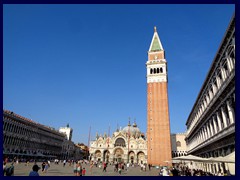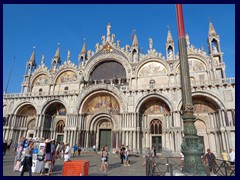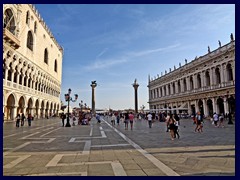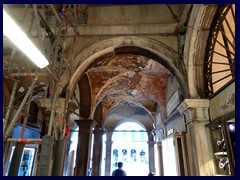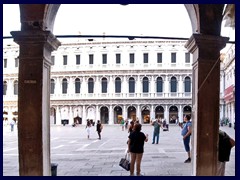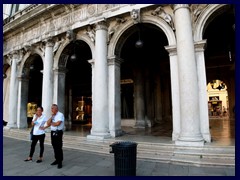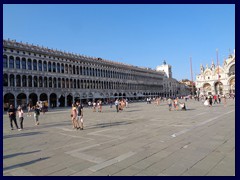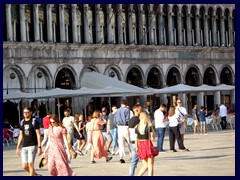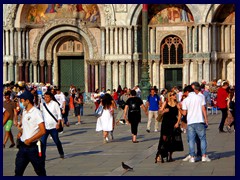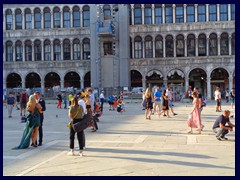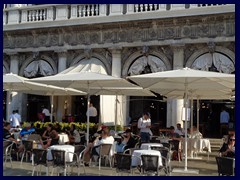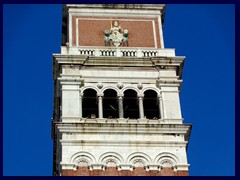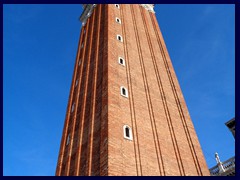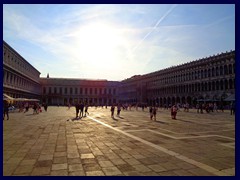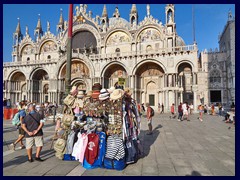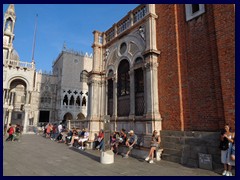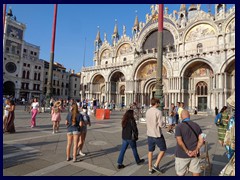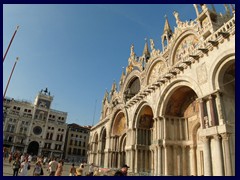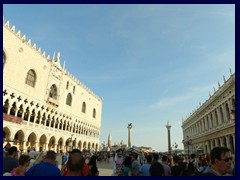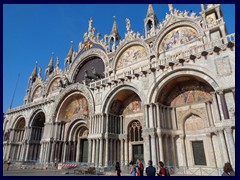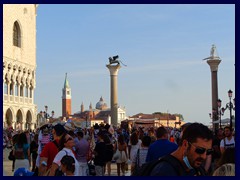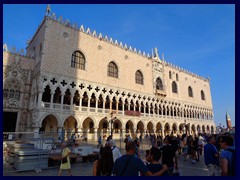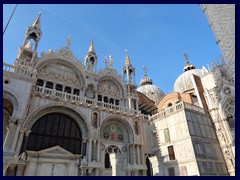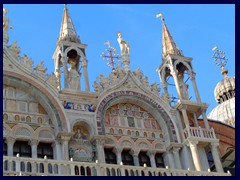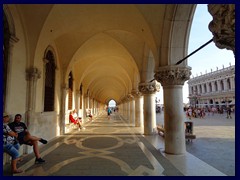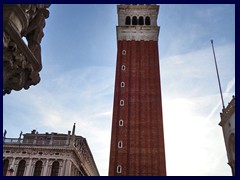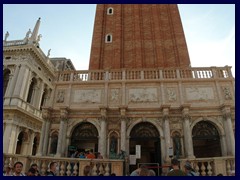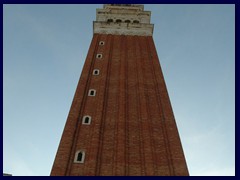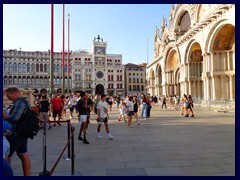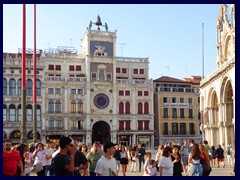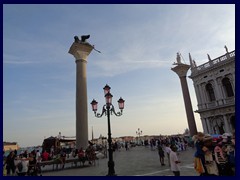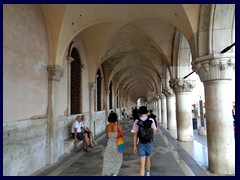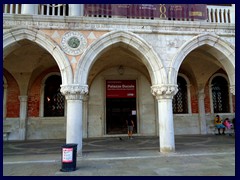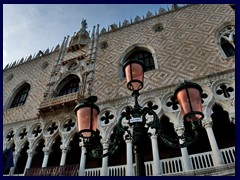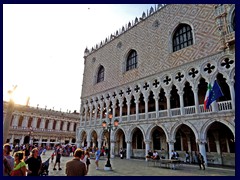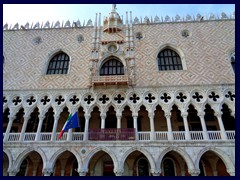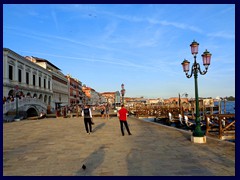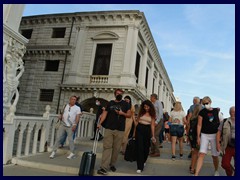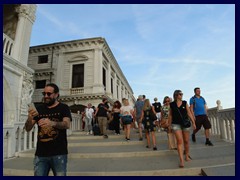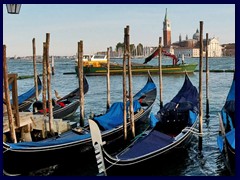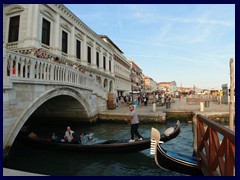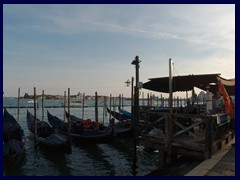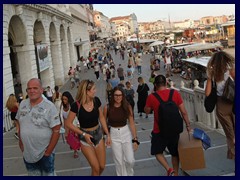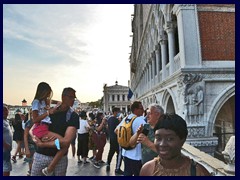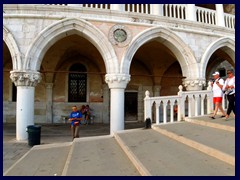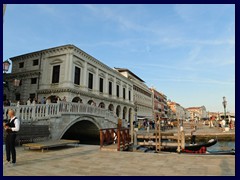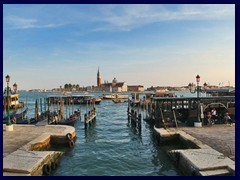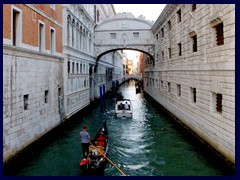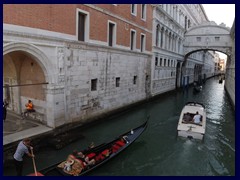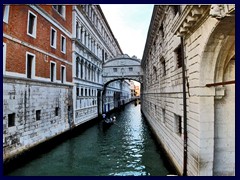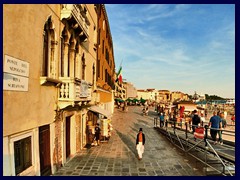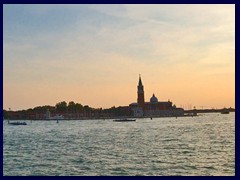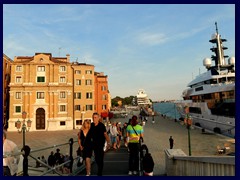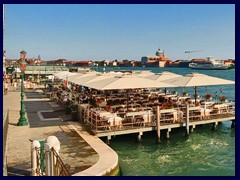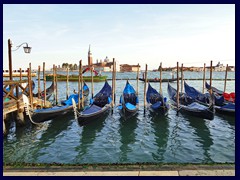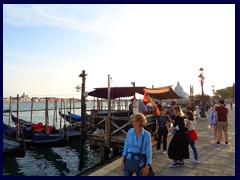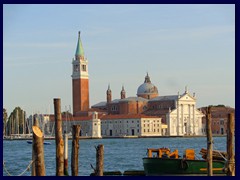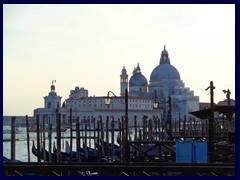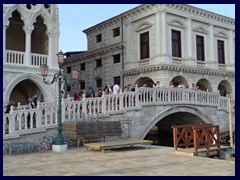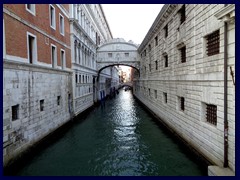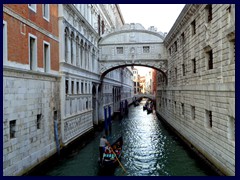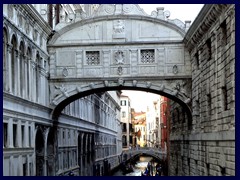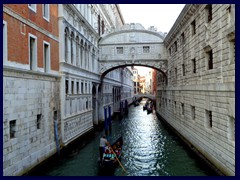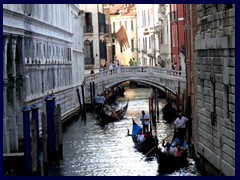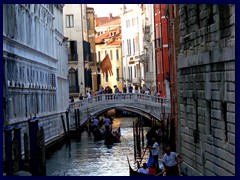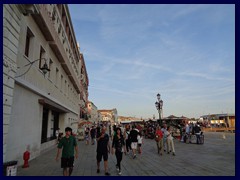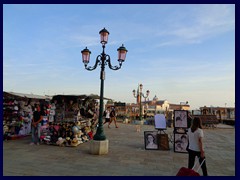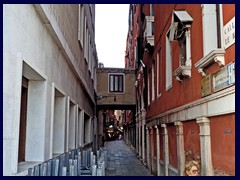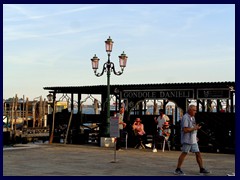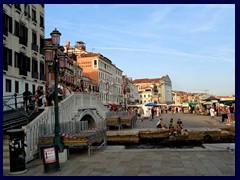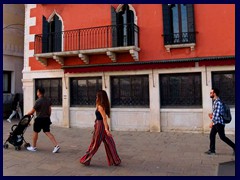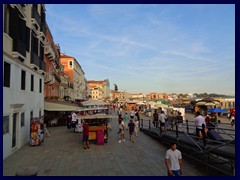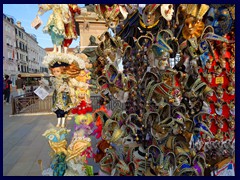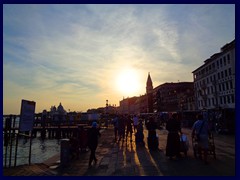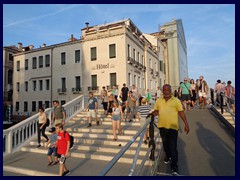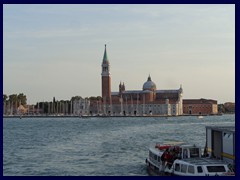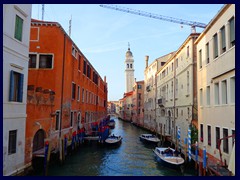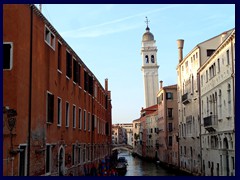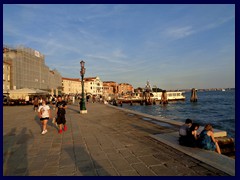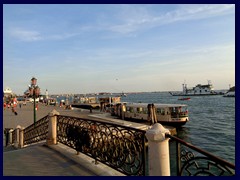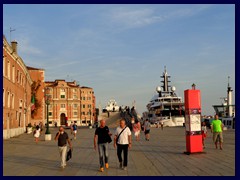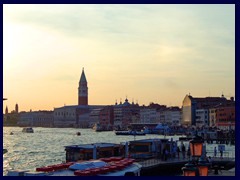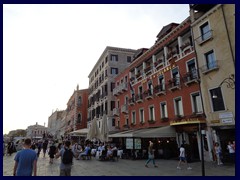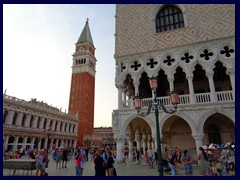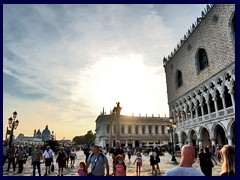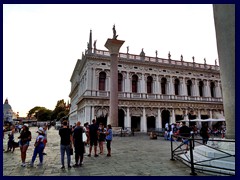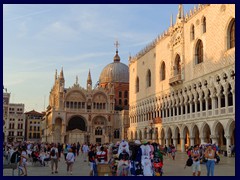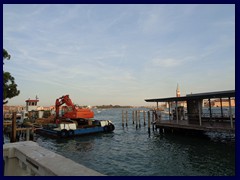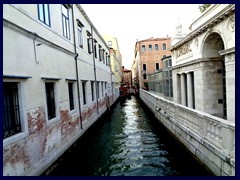Piazza San Marco, St Mark's Square
- Basilica San Marco, St Mark's Cathedral, Palazzo Ducale, Doge's Palace, St Mark's Basin, Bridge of Sighs, Riva degli Schiavoni
The main square is St Mark’s Square, Piazza San Marco where the famous St Mark’s Basilica, with its Campanile Tower is. Piazza San Marco is very large and in a rectangular shape, with palaces in every corner, often crowded with tourists. It is said that Napoleon called the square “the drawing room of Europe”.
St Mark’s Basilica (Basilica Cattedrale Patriarcale di San Marco) is the most famous church in Venice and a symbol of the city. It is a Roman Catholic church and is very beautiful, built in Italo-Byzantine style in the 11th century (978-1092), and five almost Gothic domes. It resembles Istanbul’s Hagia Sophia, especially the large interior with its golden ceilings, mosaics and paintings. It is not allowed to take pictures inside the basilica, and it had just closed for the day when we arrived, so no pictures are provided of the interior. It is the city’s cathedral since 1807. The building has been nicknamed Chiesa d’Oro (Church of Gold), as a symbol for wealth and power. The Horses of St Mark, four horse sculptures, stand above the main entrance, but they are just replicas. The originals are kept in the St Mark’s Museum inside the cathedral. They were part of a loot during the Fourth Crusade, taken from Constantinopel n 1204, and for some time Napoleon in Paris kept them. In the Treasury there are Byzantine metalworks on display.
Il Campanile, St Mark’s Campanile, is the tallest building in Venice, with a height of 98.6m, and stands next to St Mark’s Basilica. There is a modern elevator that goes to the observation deck, that we visited. The first Campanile collapsed in 1906 (due to damage from storms, earthquakes, lightning etc) and the current tower replaced it in 1912. The previous tower reached its full height in 1514. The red brick structure is topped by a pyrmid structure with a weather vane in form of the archangel Gabriel. At the observation deck level there is a belfry that can be seen by visitors. The most remarkable detail is that Venice’s canals cannot be seen from above, not even Canal Grande, the tower is not high enough. The Logetta is a decorative neo-classical structure that was built on the foot of the Campanile and is the entrance.
Doge’s Palace, Palazzo Ducale (Venetian: Palaso Dogal) is a famous palace that lies between St Mark’s Square and the St Mark’s Basin (waterfront), built in 1340-1442 in Venetian Gothic style. It is very large and also a symbol of Venice. It is a museum since 1923, that features famous paintings. In the Chamber of the Great Council, behind the Doge’s throne, you find one of the longest canvas painting in the world, Il Paradiso by Tintoretto. Many fires have destroyed parts of the building in the early decades. In the 16th century the palace was linked to the prizon by the famous Bridge of Sighs. The entrance fee is currently 28 euro (2021), due to the short time we had to spend in Venice we didn’t go inside the Doge’s Palace.
Biblioteca Marciana (Library of St Mark) is a white neo-classicist palace between the square and the basin, established 1468. It features one million post-16th century books and faces the Doge’s Palace. Statues are placed all along the roof and the interior is magnificent with domes, sculptures and paintings and a large inner courtyard.
The white connected palaces with arcades in three corners along the perimeter of St Mark’s Square are called the Procuratie and were built 1514-1538. The arcades along these buildings are filled with stores, restaurants and cafés, like the famous Caffè Quadri and Caffè Florian, founded in 1720. One of the Procuratie palaces houses the Museo Correr, that has art collections and tells the history of Venice. It was founded by the art collector Teodore Correr.
Torre dell'Orologio, or St Mark’s Clock Tower is a 15th century renaissance building on the North side of Piazza San Marco, with a clock tower in the middle. On top are “the Moors” striking the hours. There are many details to be seen on the tower. The zodiac signs in the clock show the position of the sun in the zodiac. On the other side of the structure is Rialto, the commercial heart of Venice, where the famous Rialto Bridge is.
San Marco Basin (St Mark’s Basin) is the waterfront that faces St Mark’s Square, where the Piazzetta is an extention of the piazza, facing the Venetian Lagoon. The Columns of San Marco and San Todaro can be found there. The sculpture the Lion of Venice is on top of St Mark’s Column. It is a station for gondolas, and many beautiful gondolas can be seen here. Riva degli Schavione is a beautiful waterfront promenade near St Mark’s Square, along St Mark’s Basin. This is where many boats, ferry and gondolas depart. From there you can see the Bridge of the Sighs;
The Bridge of Sighs (Ponte dei Sospiri) is the most famous bridge in Venice, situated just next to St Mark’s Square. It is an enclosed limestone bridge that passes over Rio di Palazzo and connects Prigioni Nuove (the New Prizon) with the Doge Palace’s interrogation room. It is said that the prizoners sighed since they got the last glimpse of Venice’s beauty before their imprisonment, but this rumour is not true; little can be seen of Venice from the bridge.
